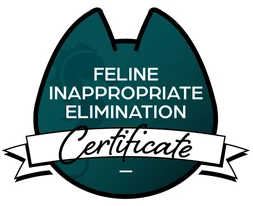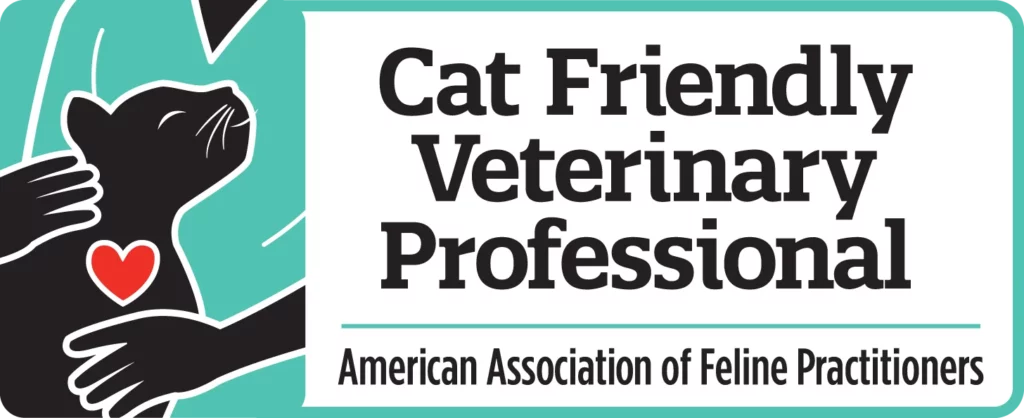Cats bite for many reasons. In some cases, it may be due to anxiety or not having access to a less dangerous set of defenses. Today, I want to discuss another common reason cats bite humans: play aggression.
“Play” and “aggression” may not be two things you think of as going together, but cats don’t necessarily see it the same way we do. For cats, playtime is hunting. In fact, one of the best ways you can play with your cat is by simulating hunting to get their natural instincts satisfied.
Unfortunately, much like how we may not understand that a cat biting at us may be an attempt to play, cats may not understand that we don’t see their bites as being playful. Plus, bites can hurt!

Is It Play Aggression?
What are some signs that your cat’s nips might be play aggression as opposed to another form of aggression? First, look at how old your cat is: play aggression is more common in kittens and younger cats, especially if they are raised without their littermates. While it can occur in older cats, in some cases it may resolve as the cat gets older and mellows out. This isn’t something to be relied on as it can continue into adulthood.
Age isn’t the only thing that would clue you into biting being play aggression. The cat’s body language is an important clue to the cause of the aggression. Cats are more likely to have minimal vocalizations and may seem to stalk humans as they would prey. The cat may also be more likely to hide and ambush the human going after your ankles or feet in particular. The bites may also be inhibited and the cat may stop before the skin is broken.
Addressing Play Aggression In Cats
If you’ve determined your cat’s biting is play aggression, what can be done? The best course is to contact a veterinarian or professional feline behavior consultant to make sure play aggression is really what is going on. A thorough analysis of your cat’s behavior will help you determine if it really is play aggression or if something else. Plus, your veterinarian can rule out potential medical causes of any behavior changes along with providing personalized advice on next steps.
In the meantime, there are some things you can try to prevent injury and see if they help. The first doesn’t directly involve you cat, but it is just as important: reframe your thinking about the cat’s behavior. A cat biting you is scary experience, but in the case of play aggression your cat is not actually trying to harm you. They’re trying to play! Looking at the behavior differently will help you maintain your relationship with your cat.
You can prevent play related aggression by being careful how you interact with your cat. Never use fingers, hands, or other body parts as play objects. It may seem harmless to do once in a while, but it teaches your cat that you are a fun cat toy. You are not a fun cat toy. Even if you don’t have a cat with play aggression this is good practice to only play with your cat with toys so you don’t run into trouble.
Reacting To Bites
When your cat does try to bite, you want to be careful not to reinforce the behavior. This may seem counter intuitive, but cats who are bored or looking for attention may actually enjoy (to some degree) any attention you give them. Yelling at your cat or using a squirt bottle on them gives them that attention and they may be more likely to repeat the behavior. Your best reaction is to not move or react at all as this isn’t what typical prey would do. Obviously if your cat does break skin, seek immediate medical attention to prevent an infection.
What you can do is redirect your cat toward an appropriate toy. It can help to have toys nearby in places you spend a lot of time in case they are needed. You can also use toys to prevent play aggression by making sure your cat get gets adequate and stimulating play in. Make sure you play with them regularly and before the aggressive behavior starts as preventing it in the first place is the best solution.
Interactive play, or play between you and your cat, should be part of your daily routine. Exact play needs vary from cat to cat and depend on the cat’s age and personality, but a good rule of thumb is at least two (if not three) 15 minute play sessions per day spread through the day. While this may seem like a big ask, you will be rewarded with a happy cat and a reduction in play related aggression.
If Play Doesn’t Work
If adding in additional appropriate play doesn’t work, there may be something deeper going on. You could also have another form of aggression happening or you may not be using the best toy for your cat. Set up a behavior consultation with me and we’ll figure out what is happening along with a plan to fix the problem.










